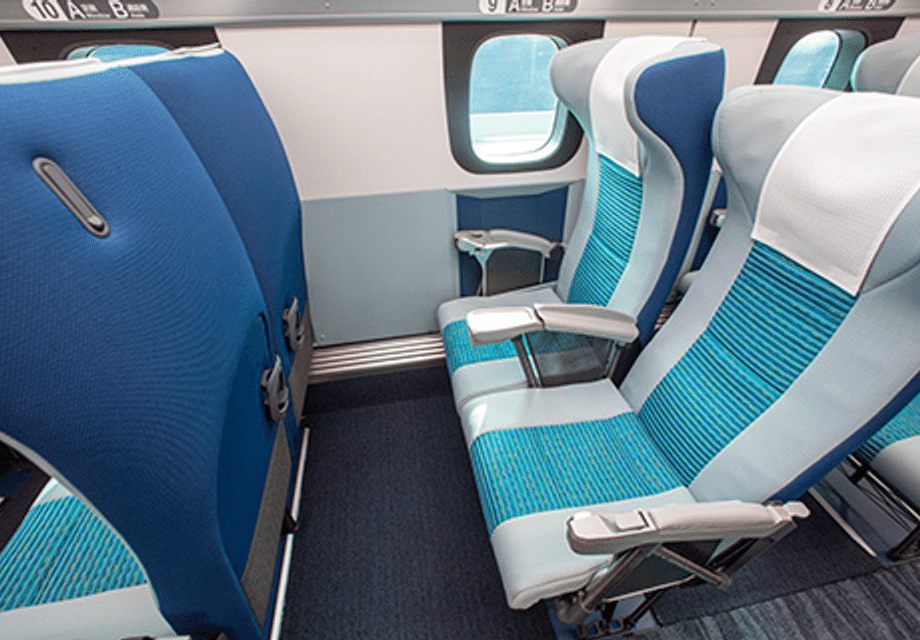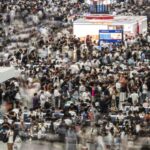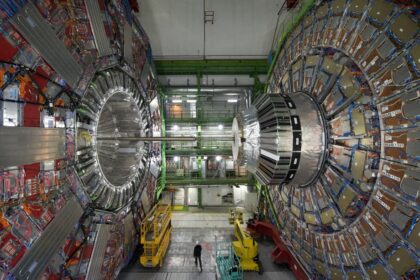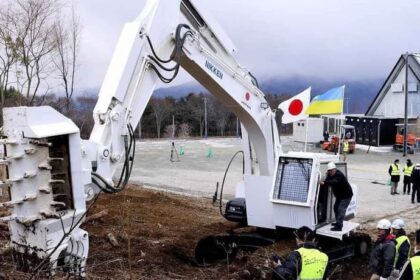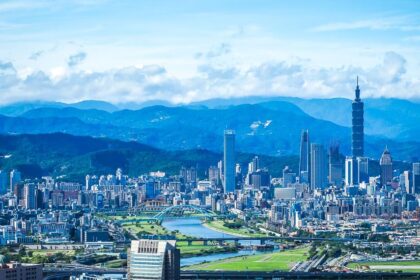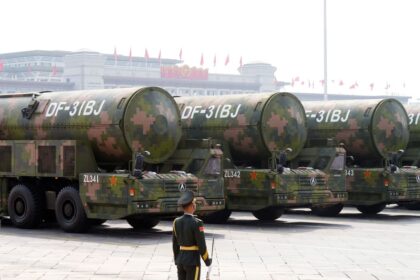A design choice shaped by a 40 minute ride
Japan is preparing a new generation of high speed maglev service between Tokyo and Nagoya, and one design decision stands out. Central Japan Railway Company (JR Central) plans to install only nonreclining seats across the train. Seat backs will be fixed at a 15 degree angle. The operator says this setup preserves comfort during a journey that will last about 40 minutes while unlocking more legroom and space for luggage at passengers feet.
- A design choice shaped by a 40 minute ride
- How magnetic levitation changes the cabin equation
- Comfort, space, and the case for nonreclining
- From prototype to service: inside the M10 test car
- Opening date, route, and the long wait
- What a 500 km/h ride feels like
- Comparisons with Shinkansen and planes
- Costs, maintenance, and sustainability
- What riders can expect
- Key Points
The shift comes as the company moves from earlier prototypes to a commercial interior concept built for speed, short trip times, and quick turnarounds. The new seats are thinner and simpler than traditional recliners, removing motors and heavy mechanisms. JR Central also says the cushions will use softer materials than those on the Tokaido Shinkansen to distribute body weight more evenly. The goal is a cabin that feels open and efficient without the trade offs often associated with tighter layouts.
How magnetic levitation changes the cabin equation
Maglev trains ride on a cushion of magnetic force instead of wheels and rails. Japan uses electrodynamic suspension (EDS), which relies on powerful superconducting magnets on the train that interact with coils in the guideway. At speed, repulsive forces lift the train several centimeters above the track. During low speed movement, the train uses small wheels, then transitions to full levitation as velocity rises.
Removing wheel to rail contact eliminates rolling friction and allows the train to target top speeds around 500 kilometers per hour. At those velocities, aerodynamic drag becomes the dominant force. The performance gains reshape the passenger experience. The Tokyo to Nagoya trip will shrink to about 40 minutes, less than half the time of today’s bullet trains on the same route. With cruising time compressed, JR Central can prioritize open space, easy movement, and efficient luggage storage over deep reclining. The fixed 15 degree angle aims to strike a balance, keeping posture relaxed without intruding into the space behind each seat.
Comfort, space, and the case for nonreclining
A fixed back at a modest angle can work well when journeys are short. Many travelers spend much of a 40 minute segment reading, using a phone, or simply looking out the window. Deep recline is less critical than on a multi hour trip. A uniform angle also eliminates seat back disputes, since no one can tilt into another passenger’s knees. That helps maintain a calm cabin during peak demand, when every seat is occupied and legroom management matters.
Thinner seat backs open up vital centimeters for legs and for personal items. JR Central’s interior plan expects more passengers to keep a carry on sized bag at their feet rather than relying on overhead shelves or end of car racks. That reduces the scramble for limited storage during boarding and arrival. With the extra space near the floor, a small suitcase can be stowed upright or sideways without blocking the aisle.
The seat cushion design is central to comfort in this arrangement. Softer padding that spreads body weight more evenly can reduce pressure points at the hips and lower back, which matters when posture cannot be adjusted with a recline button. The firm but forgiving feel often associated with Japanese high speed rail seating is being tuned here for a short, fast trip at very high speed, where steady acceleration and deceleration are present but not severe.
From prototype to service: inside the M10 test car
JR Central’s latest test vehicle, designated M10, provided the first look at the exterior and the nonreclining interior concept when it was shown to the media in July. Earlier prototypes featured conventional reclining seats. Moving to a fixed back design is part of a broader simplification aimed at saving space, reducing weight, and improving maintainability.
The M10 car informs the production blueprint, but the company states that final specifications will be set after further refinement. That process will include ride quality checks, materials testing, and feedback from evaluation runs. The commercial train will be modeled on the prototype, with adjustments where testing shows a clear benefit.
Opening date, route, and the long wait
JR Central once aimed to open the Tokyo to Nagoya section in 2027. The plan is now postponed. The operator has said the start could slip to 2034 or later, citing a construction dispute along the route. Much of the line crosses mountainous terrain and requires extensive tunneling. Local concerns regarding environmental impact and water resources have slowed approvals in one key area along the corridor. Until that issue is settled and full access is granted, heavy construction cannot finish on schedule.
The long term plan extends the line to Osaka. With a design speed of 500 kilometers per hour, the company has projected a Tokyo to Osaka travel time of around 67 minutes once the full route is complete. That would reshape travel patterns along Japan’s busiest corridor, linking major economic hubs across the Pacific coast with fast city center to city center service.
What a 500 km/h ride feels like
Maglev rides differ from conventional trains in a few ways. The lack of wheel to rail contact removes a major source of vibration and rolling noise. Acceleration feels smooth and continuous, and once at speed the cabin tends to be quiet apart from aerodynamic sounds. The line will pass through many tunnels, so the train nose and pressure management systems are designed to handle rapid changes in air pressure, reducing ear discomfort and minimizing micro pressure waves at tunnel exits.
At such speeds, seating posture and stability matter. A fixed 15 degree back helps keep the head and torso in a consistent position during acceleration and braking, which can reduce the need to readjust the seat frequently. For a trip of about 40 minutes, that trade, fixed posture in exchange for more space and simpler maintenance, is one JR Central believes riders will accept once they experience the overall speed and smoothness.
Comparisons with Shinkansen and planes
The Tokaido Shinkansen that runs today between Tokyo and Nagoya uses reclining seats, and on longer trips many passengers expect that feature. The maglev’s operating plan is different. It compresses the journey to a short intercity hop and pairs that ride with a cabin tuned for fast boarding, clear foot space, and simple storage. A cabin floor free of bulky mechanisms and thick seat backs eases cleaning and inspection between runs, which helps on a service aiming for frequent departures.
Airlines make a similar calculation on short flights, where recline is limited or sometimes removed in favor of legroom and speed of service. The maglev approach brings that logic to ground transport, while adding the benefits of city center stations and predictable journey times that are not subject to air traffic or weather delays in the same way.
Costs, maintenance, and sustainability
Nonreclining seats have fewer moving parts, which lowers the chance of failures that can sideline a seat or an entire row. Simpler frames also tend to be lighter. In a high speed train, weight savings add up across hundreds of seats. Less weight can reduce energy use and improve performance margins. Maintenance teams benefit from standardized components and easier access for inspections, which keeps trains available for service.
On the infrastructure side, maglev systems do not suffer from rail wear and wheel flats, two costly items for conventional high speed rail. At very high speed, energy consumption is driven mainly by air resistance rather than friction with the track, so the efficiency gains come more from the way maglev reduces mechanical losses and allows optimal routing and gradients. The ride is also quiet in ways that matter to communities near the line, since rolling noise is replaced by aerodynamic sound that can be managed with barriers and careful alignment.
There are trade offs. Maglev requires dedicated guideways that cannot share existing tracks, and superconducting magnets and their support systems are expensive. Construction must meet strict standards for alignment and shielding. JR Central is betting that long term operating and maintenance benefits, plus the value of very fast trips that draw riders from roads and short haul flights, will outweigh the upfront cost.
What riders can expect
Stations for the maglev will serve dense urban hubs, offering the usual mix of ticketed access areas, waiting spaces, and retail options. On board, passengers can expect assigned seating with a consistent angle and a clear space around the legs. The extra room at the feet makes it easier to keep a small suitcase nearby, which should reduce time spent hunting for space in racks. The interior concept prioritizes fast settling, easy movement in the aisle, and clear sight lines.
For many travelers, the headline will be time saved. The 40 minute Tokyo to Nagoya ride shifts the balance of door to door travel compared with flying. Security and boarding for a train are usually simpler than for an aircraft, and arrival in city centers removes a long transfer from an airport. The nonreclining seats are one piece of a design that centers the whole experience on speed, reliability, and space efficiency.
Key Points
- JR Central will equip the Tokyo to Nagoya maglev with nonreclining seats set at a fixed 15 degree angle.
- The decision targets more legroom and space for luggage at passengers feet, helped by thinner seat backs.
- Seat cushions will be softer than those on the Tokaido Shinkansen to spread body weight more evenly.
- The latest M10 test car already carries the fixed back seats, replacing reclining seats used in earlier prototypes.
- Top speed is planned at about 500 kilometers per hour, cutting the Tokyo to Nagoya journey to roughly 40 minutes.
- JR Central has postponed the opening, with a start now expected in 2034 or later due to a construction dispute.
- The line is planned to extend to Osaka, with a future Tokyo to Osaka travel time projected at about 67 minutes.
- Japan’s maglev uses electrodynamic suspension with superconducting magnets, levitating the train at speed.
- Simpler seats reduce weight and maintenance needs, supporting fast turnarounds and reliable operations.
- The design emphasizes a smooth ride, quick boarding, and efficient use of cabin space over deep recline.


